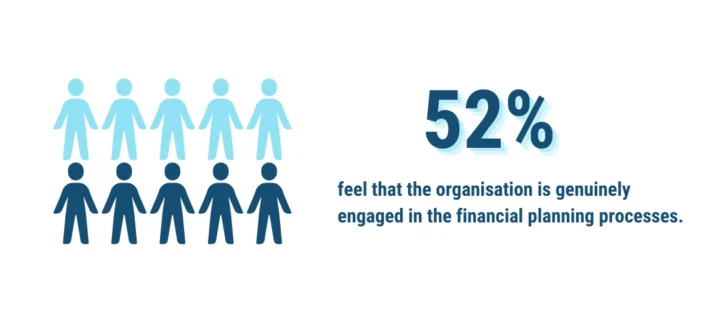1. Work driver-based
To simplify the work for everyone involved, you’ll have to abandon the traditional structure and start focusing on building the forecast bottom-up, using KPIs and parameters that are connected to the revenue and cost drivers that are most critical for your business. By working driver-based with concepts that the employees are familiar with, it’ll be easier for those involved to provide qualitative input. Key employees will get a better understanding of what drives revenues and costs and how they themselves contribute to the organisation's goals.
2. Systemise
There are few non-financial professionals who perceive an Excel process to be clear and easy to manage. If you want the organisation to be involved in the process, it’s basically a requirement to work with driver-based and and automated processes. A modern system that facilitates strategic financial planning offers both more comprehensible interfaces and features that make the work clearer, better, and enhance the understanding of the entity.
3. Delegate
Dare to delegate the responsibility and allow different levels of the organisation to give input. If you’ve systemised your process and already work driver-based, you’ve created a good foundation to be able to build engagement and accountability – but you still need soft values such as trust, discussions and follow-up conversations. Let the operation participate in the follow-up of the forecasts and goals, allow key employees to give input, and ensure that the financial planning work and financial control are part of their responsibility and work.
4. Work frequent
Working more dynamically and frequently with agile and updated forecasts has become increasingly important given our rapidly changing world. This is not only according to us, but also to 82% of the respondents in The State of Corporate Financial Planning. Working more frequently with your forecasts leads to both higher quality of work and the information generated being more useful.
To be able to work more frequently with financial planning, it’s important to set goals at a reasonable level and to work driver-based. If you only do the first and not the latter, the process will only lead to higher demands and an increased workload.
5. Automate
Reduce manual labor by automating as much as possible of the strategic financial planning. By eliminating manual tasks, you’ll also reduce the time spent on boring parts of the processes and create the right conditions for your organisation to focus on contributing with qualitative input and insights.
A dedicated system for budgeting, forecasting and planning is not a necessity for small of less complex organisations, but it will simplify automation. However, modern system support ensures that you always have access to the latest quality-assured outcome data and that you can receive automatically calculated forecast suggestions.




